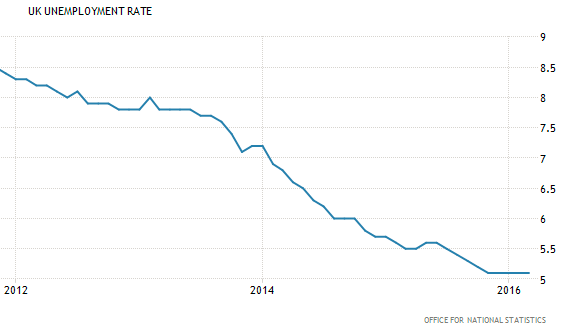
Compare what Norfolk and Suffolk NHS Foundation Trust (NSFT) claimed in 2013 with what NSFT claims in 2016.
What has changed except that NSFT suffered 45 unexpected deaths in the first three months of 2016 compared with 22 per quarter in 2012-13?
While the number of deaths has doubled, the excuses remain the same.
Most worrying is that the number of deaths continues to increase.
When we recently met the Director of Nursing, Jane Sayer, she told us that NSFT doesn’t have the time, money or resources to explore the reasons for the increasing number of deaths.
Meanwhile, there is an ‘unexpected death’ funeral every other day.
NSFT wants to close the curtains and pretend it isn’t happening.
In 2013, the EDP reported:
A mental health trust has ordered a review into the reasons behind a spike in unexpected deaths in Norfolk after 20 patients in their care died during a five-month spell.
In 2016, the EDP reported:
An independent inquiry into the rise of unexpected deaths at the region’s mental health trust will be carried out after it emerged figures for Norfolk and Suffolk were the highest in the country.
The announcement came on the same day as we revealed there were a total of 35 unexpected deaths at Norfolk and Suffolk NHS Foundation Trust (NSFT) in the last three months, bringing this financial year’s total so far to 112.
In 2013, NSFT told the EDP:
Roz Brooks, director of nursing and patient safety at the mental health trust, said a serious incident (SI) was recorded when a patient died unexpectedly up to six months from discharge.
“The board is monitoring our SIs closely for all trends or themes.”
In 2016, the Chief Executive of NSFT, Michael Scott, told the EDP:
The number refers to patients who die unexpectedly while in the care of the trust, or within six months of discharge.
“We are far from complacent, and there would be no point in our commissioning this investigation if we turn a blind eye to where it indicates we need to do better. That is something we simply will not do.”
In 2013, the then Director of Nursing at NSFT, Roz Brooks, told the EDP:
“We make life difficult for ourselves by over reporting, but ethically I am proud we do that. The moment we get a call about a death we are very proactive and we do not wait for commissioners to phone us up or for a coroner to make a report.”
In 2016, Michael Scott, the Chief Executive of NSFT, told the EDP:
Mr Scott said that being a ‘high reporter’ represented a culture of openness where staff felt they could raise issues and therefore quickly put matters right.
In 2013, the then Director of Nursing at NSFT, Roz Brooks, told the EDP:
Ms Brooks added that the majority of deaths were of patients using the trust’s drug and alcohol services.
In 2016, Michael Scott, Chief Executive of NSFT told the EDP:
“We run drug and alcohol services which many other trusts don’t do, and patients from that area account for around 30pc of deaths.
In 2013, NSFT told the EDP:
Officials from the NHS trust said they were monitoring closely the number of deaths of patients using their community services, but a rise in suicide rates was in line with national figures.
In 2016, the EDP reported:
…NSFT insisted their figures were in line with the national average…
In 2013, Norman Lamb, MP for North Norfolk and the then Minister of State at the Department of Health directly responsible for mental health told the EDP:
“On the face of it, they are extremely troublesome and I want to understand better the long-term trend. It has been established that there is a clear government priority to reduce suicide rates and there are steps that can be taken to reduce suicide rates and we need to understand better the statistics,” he said.
In 2016, Norman Lamb, MP for North Norfolk and the former Minister of State at the Department of Health directly responsible for mental health told the EDP:
“The figures are obviously of enormous concern and it [the trust] is right to seek to understand the full picture and then take necessary action.”
In 2013, the Chief Executive of Norwich and Central Norfolk Mind, Amanda Hedley, told the EDP:
“Where there are social problems with the economy and people losing their jobs, we are likely to see an increase in depression and probably suicide.
By 2016, the number of unexpected deaths had nearly doubled but unemployment had fallen by more more than a third.
Plus ça change, plus c’est la même chose.
What happened between 2013 and 2016?
In 2012/13 there were 53, later inexplicably revised to 88, unexpected deaths at NSFT.
In 2013, 20 unexpected deaths over a five month period in Norfolk was shocking enough to be investigated by the EDP and for an inquiry to be ordered.
In November 2013, the Campaign to Save Mental Health Services in Norfolk and Suffolk was founded. One of our main concerns was an increase in the number of unnecessary deaths linked to the radical redesign.
In February 2015, NSFT was rated Inadequate by the Care Quality Commission (CQC) and shortly afterwards NSFT was placed into special measures by Monitor, the regulator of NHS foundation trusts (now part of NHS Improvement).
NSFT’s action plan had a deadline of twelve months in which to exit special measures. NSFT remains in special measures.
In the first three months of 2016, there were 45 unexpected deaths at NSFT. On current trend, the number of deaths will have doubled to 180 since 2012/13: a funeral every other day. There were 17 unexpected deaths in Norfolk and Suffolk in March 2016 alone. Three years earlier, an average of four unexpected deaths per month in Norfolk was headline news.


Why no sense of shame, why no sense of shock, why no urgency to find out what is going wrong? If these figures are no worse than the national average then we have a NATIONAL CRISIS of huge proportions. Either way we need to know where the fault-lines are and prioritise. Our impression is that there are many people with severe mental illness who no longer receive close monitoring of their mental state, or the close support to keep them well. When relatives raise the alarm the system is not capable of responding. Practitioners are acutely aware of the bed shortage and possibly opt for home treatment when it is not necessarily the safe option. There is a multi-agency Prevention of Suicide Group but does anyone know of any recommendations it has made? We can all guess what’s going wrong but surely with so many deaths we need properly funded research/inquiry to guide future practice and funding.
Perhaps the designers and private companies that profit from a “mental health crisis” want to cull the population and micro target the vunerable as was seen in 1990’s America ? See Brave New Films & how it’s done
btw.. I went along to a Work Capability Asessment two weeks ago. Which was actually triggered by having a hip replacement operation,and the longer term effects arthritis has. But as a political campaigner I went along with some printed out evidence of how ATOS/UNUM use Hacking Team technology. And JTRIG evidence from Edward Snowden ect.. The doctor/medic tried to have me sectioned !. Point being: I was mentally fine, so it looks as though they are doing what Brave New Films are reporting. Getting as many patients into the MH institutions so in future they can turn big profits. Many inside Ipswich Woodlands (where I was sectioned after reporting to doctor of online JTRIG ops) are fine but were suffering from similar harrassment after becoming political.
Regarding the articles you share above: Worth reading Ian J Sinclair’s article about the “local” EDP Newspaper. That is NOT a locally controlled news source at all. Instead it is controlled (and notably comments section ) by the establishment/Tory Archant Group.